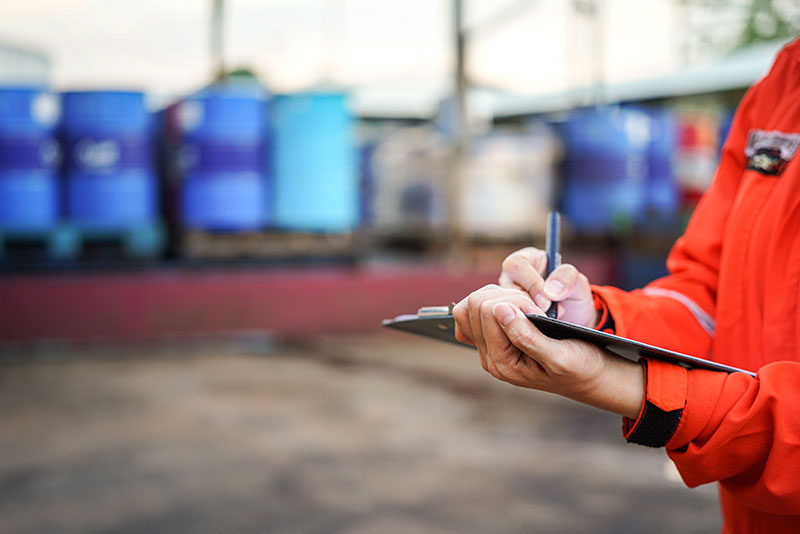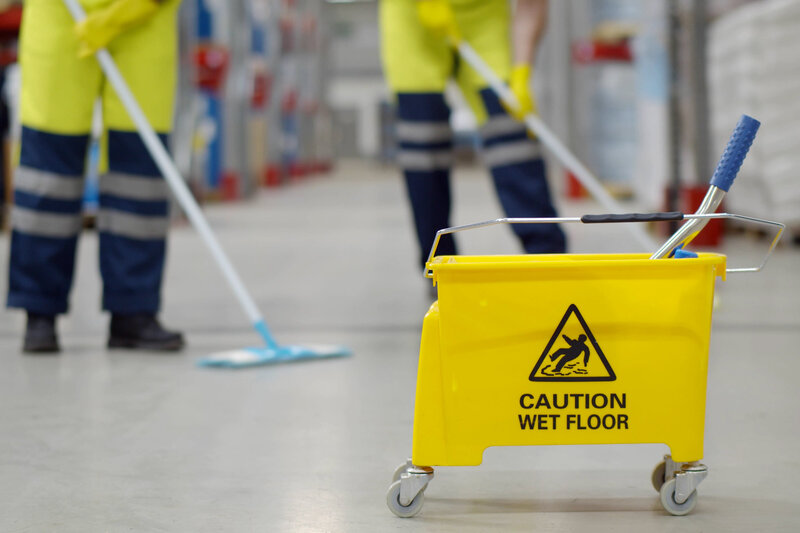Industrial cleaning is essential to maintaining a safe and productive work environment. However, it can also pose significant hazards and risks to workers who perform the cleaning without proper safety precautions.
And it’s no surprise industrial cleaning is dangerous. It involves washing and maintaining heavy machinery, using harsh or toxic chemicals and working at heights. Because of this, hazard and risk management is an integral part of the job, minimising the threat to workers, clients and the public.
Assessing hazards and risks
Under the Health and Safety at Work Act, it’s essential to identify any risks or hazards and eliminate or minimise them before anyone starts a job.
Identifying hazards and risks
The first step in risk assessment and management is to identify potential hazards. This can include cleaning chemicals, machinery, flooring and other aspects of the work environment. We can only prepare for the job at hand by identifying these issues at the start. Once they are recognised, assessing the likelihood and severity of any potential harm is essential.
Determining control measures
The next step is to determine appropriate control measures to minimise risk based on the likelihood and severity of potential harm. This can include using less hazardous cleaning chemicals, installing non-slip flooring, and providing appropriate PPE.
Once control measures have been determined and implemented, it is essential to monitor their effectiveness. This can involve ensuring employees are properly using PPE, continuously monitoring the work environment for further potential hazards and regularly reviewing and updating risk assessment as needed.

Common hazards in industrial cleaning
Industrial cleaning is a specialised job, fraught with many dangers you wouldn’t find in other professions.
Chemical exposure
One of the most significant risks in industrial cleaning is exposure to hazardous chemicals, including acids, solvents and caustic agents. Many cleaning agents used in industrial settings can be toxic if not handled properly. Exposure can occur in a number of ways, including inhalation of vapours, contact with skin or eyes, or even ingestion.
Slips and falls
Industrial cleaning can involve working on slippery surfaces or uneven flooring. This is especially fraught when soapy water, oily surfaces and debris is involved. To minimise the risk of these hazards, it is essential to maintain clean and dry floors, use non-slip flooring, and provide appropriate footwear for employees. You must also ensure that workers are trained in proper techniques to manage slippery surfaces. Proper use of ladders and scaffolding must also be covered.
Electrical hazards
A risk of industrial cleaning is working near electrical equipment, which can pose a severe threat of electrical shock or fire. It is essential that machinery is adequately grounded and workers follow safe work practices around electrical equipment. Employees should be trained to use electrical equipment correctly and recognise and respond to electrical hazards.
Damage to property
It’s not just people who are at risk; property can also be damaged during industrial cleaning. Powerful cleaning equipment or machinery can accidentally damage floors, walls, or other structures, so assessing hazards and risks means also considering environmental damage. Workers should be trained on all equipment and use protective barriers or padding to minimise structural damage.

How we maintain effective hazard and risk management
Health and safety in the workplace is never a done-and-dusted deal. It’s a continuous endeavour involving constant vigilance, training and upskilling.
All our staff have undergone official hazard and risk management training set out by the New Zealand Government. This training helps our employees understand the rights and responsibilities for workplace health and safety under the Health and Safety at Work Act 2015.
Keeping up to date with qualifications enables us to be the best commercial and industrial service provider in the industry in New Zealand.
We have a solid commitment to health and safety for our team and clients. We ensure our clients’ jobs are always completed to the highest standards.
By conducting a thorough hazards and risks assessment and implementing appropriate control measures, we can help to minimise the dangers associated with industrial cleaning and ensure a safe and productive work environment for all.
Contact us today if you need a job completed by professionals with the necessary qualifications and experience.

